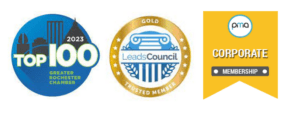For marketers that actively advertise via pay-per-call, the benefits are clear: low costs, high returns, and high-intent inbound leads delivered right to their call agents. But, for advertisers who are new to the pay-per-call space, those benefits are just words until there are facts and figures to back them up. For that reason, we’ve pulled 29 statistics from credible sources that prove the effectiveness of pay-per-call.
We discuss why inbound marketing and performance-based methods are preferable to traditional marketing methods, why marketers can and should capitalize on the rise in mobile device use, and why inbound calls are the ideal type of inbound lead. Our team of pay-per-call experts also takes a look at the success of our own partners, while comparing average conversions, call durations and return on ad spend across two key verticals.
Inbound marketing is more effective than other types of marketing.
Marketers are moving away from traditional forms of marketing that disrupt the consumer (i.e. television, radio and print) and instead focusing their budgets on marketing that attracts the consumer to them. This type of marketing is called inbound marketing. Inbound marketing practices attract the consumer to a business and drive them to act – often in the form of calling, submitting a form or purchasing a product. The consumers who reach out to you are called inbound leads, or leads that come into your business on their own.
The best part? Inbound marketing typically costs less and provides a higher return on investment (ROI) than traditional forms of marketing. In fact, one 2019 study confirmed that inbound marketing generates three times more leads per dollar than traditional methods. Another study found that, on average, inbound leads cost 61% less than leads generated from outbound methods.
- Inbound marketing generates three times more leads per dollar than traditional methods (Weidert, 2019)
- Inbound leads on average cost 61% less as compared to outbound leads (Hubspot)
- Businesses that rely on inbound marketing save more than $14 for every newly acquired customer (Hubspot)
- Globally, 41% of marketers confirm inbound marketing produces measurable ROI (Invesp, 2020)
- Properly executed inbound marketing is 10x more effective for lead conversion than outbound (Invesp, 2020)
- The average cost per lead drops 80% after 5 months of consistent inbound marketing (Invesp, 2020)
- Inbound practices produce 54% more leads than traditional outbound practices (Invesp, 2020)
Want to save these for later?
Performance-based marketing is trending as a method for generating inbound leads at a low cost.
With such obvious benefits to inbound marketing, marketers today are actively searching for the best tactics to attract and convert inbound leads, and performance-based methods are among the most popular.
Performance marketing is, well, just that – marketing based on performance. Advertisers who use performance-based methods only pay when a specific desired action is completed, such as a click to a website, a form submission, an inbound call or even a purchase. This type of marketing is viewed by advertisers as a cost-effective way to attract inbound leads, and often produces a higher return on investment (ROI) than other forms of marketing.
For those reasons, an increasing number of businesses are gravitating towards performance marketing as a method for generating inbound leads at a low cost. In fact, performance marketing tactics represent over $6.8 billion dollars spend each year (Performance Marketing Association) and Statista projects that American businesses alone will be spending $8.2 billion dollars on performance marketing by the year 2022.
Related: Why Performance Marketing is a Trend That’s Here to Stay
- Performance marketing tactics represent over $6.8 billion dollars spent each year (PMA)
- American businesses will spend $8.2 billion dollars on performance marketing by 2022 (Statista)
- Over 80% of national brands prefer performance marketing to traditional marketing (Mediakix)
- 64% media buyers expect to increase their performance marketing in 2021 (iab)
The average return on ad spend (ROAS) for performance marketing is 12:1 (PMA)
Want to save these for later?
Marketers should capitalize on the increase of mobile device users and inbound callers.
Performance marketing has proven to be a popular and effective choice for generating inbound leads, however it’s necessary that marketers also consider what advertising channels work best for attracting those leads. With the recent surge in mobile device use, it is critical that businesses take time to consider channels that involve or adapt well to mobile device use (for example, mobile search or mobile apps).
Mobile device use has grown exponentially in recent years and continues to grow today. In the past year alone, the total number of unique mobile users grew by 93 million globally, and that number continues to grow by 1.8% each year. As mobile usage has grown, so has mobile search, with 80% of users searching the internet via mobile device, and about half of all global website traffic was generated from mobile devices in 2019.
Furthermore, nearly 60% of smartphone users have contacted a business directly from their search results (using the “click-to-call” option, for example). For marketers, this figure plays a huge role in developing an effective marketing strategy – not only in how they decide to advertise their product or service, but also in how they choose to manage inbound leads (particularly inbound calls). When executed correctly, an effective marketing strategy enables businesses to capitalize on the increase of mobile users and callers, which is why more and more brands are adding a pay-per-call strategy to their marketing mix.
- The total number of unique mobile users grew by 93 million in the past twelve months, and continues to grow at a rate of 1.8 percent each year (datareportal, 2021)
- 80% of users used a mobile device to search the internet in 2019 (quoracreative)
- As of 2019, mobile devices generated about half of all website traffic globally (Statista, 2020)
- 60% of smartphone users have contacted a business directly using the search results (e.g. “click to call” option) (Think with Google, 2019)
- 48% of phone calls are driven by mobile search, followed by desktop search at 17% (localogy)
- 61% of mobile searchers state that click to call is most important in the purchase phase of the shopping process (Think with Google, 2013)
Callers convert faster, spend more money, and have a higher retention rate than other types of leads.
While mobile search is one of the most popular channels for generating a call, it is not the only option. Calls may originate from any variety of sources including online (SEM, SEO, social media, etc.), offline (print, radio, television, direct mail, etc.) and carrier (directory assistance).
Related: Understanding Different Types of Calls
Regardless of what channel they come through, calls in general tend to have high conversion rates. One study found that calls have a 30 to 50 percent conversion rate – much higher than clicks at 1 to 2 percent. Additionally, callers convert faster, spend more money, and have a higher retention rate than other types of leads. In a recent study by Forrester, sixty percent of marketers stated that inbound callers convert on average 30% faster, spend 28% more and have a 28% higher retention rate.
- Calls have 30 to 50 percent conversion rates while clicks top out at 1-2 percent (Marketing Land, 2015)
- 60% of marketers say that those who initiate an inbound call in the course of the customer journey convert faster (avg. 30% faster) (Forrester, 2017)
- 60% of marketers say that those who initiate an inbound call spend more (avg. 28% more) (Forrester, 2017)
- 54% of marketers say that those who initiate an inbound call have higher retention rate (avg. 28% more) (Forrester, 2017)
Pay-per-call is an effective method for scaling call traffic and measuring conversions and return on ad spend (ROAS).
It’s no secret that inbound calls are desirable for advertisers, which is why many choose to take advantage of performance-based marketing tactics, like pay-per-call, to scale their call traffic. Working with a pay-per-call network gives advertisers access to a wide variety of unique call sources as well as the ability to measure caller conversions and return on ad spend (ROAS).
Related: How Pay-Per-Call Helps Your Inbound Sales Agents
At Soleo, we pride ourselves on providing quality inbound call traffic to our advertiser partners through our pay-per-call platform, CallThread. We recently looked at the success of our own partners in two key verticals, and here’s what we found:
Pest control
Pest control companies face unique challenges when it comes to marketing services and generating leads. Luckily, with the help of our pay-per-call platform, we’ve been able to meet the specific needs of our pest control partners by running highly targeted campaigns to generate quality inbound leads.
Read more: How Pest Control Businesses Win Customers with Pay-Per-Call
Our pest control partners report a 60% conversion rate and 8-minute average call duration on the 15,000+ qualified calls they receive each month.
Moreover, we have the unique ability to target consumers in key geographic locations who are looking to schedule new, high value services such as termite or bed bug fumigation, or services that require multiple visits. This enables us to drive a higher return on ad spend (ROAS) for our partners. Today, for every $1 dollar spent on pay-per-call, our pest control partners make $3 dollars in return.
- 60% conversion rate
- 8 minute average call duration
- Over 15,000 qualified calls per month
- 3:1 ROAS – for every $1 spent on pay-per-call advertising, pest control businesses get $3 in return
Auto and Home Insurance
We work closely with our auto and home insurance clients to understand their goals and metrics for success. This includes:
- Focusing on the geographic areas where their products and services are most competitive in order to drive higher conversions
- Identifying consumers within a desired risk profile such as those who currently hold an insurance policy and no history of a DUI
- Identifying consumers who may be looking to bundle insurance policies such as homeowners with multiple vehicles or drivers
The results speak for themselves. We deliver over 20,000 qualified calls to our auto and home insurance partners each month, with an average call duration of 12 minutes and a 45-50% conversion rate.
Read more: How Auto Insurance Companies Increase ROI with Pay-Per-Call
- Over 20,000 qualified calls per month
- 12 minute average call duration
- 45-50% conversion rate







